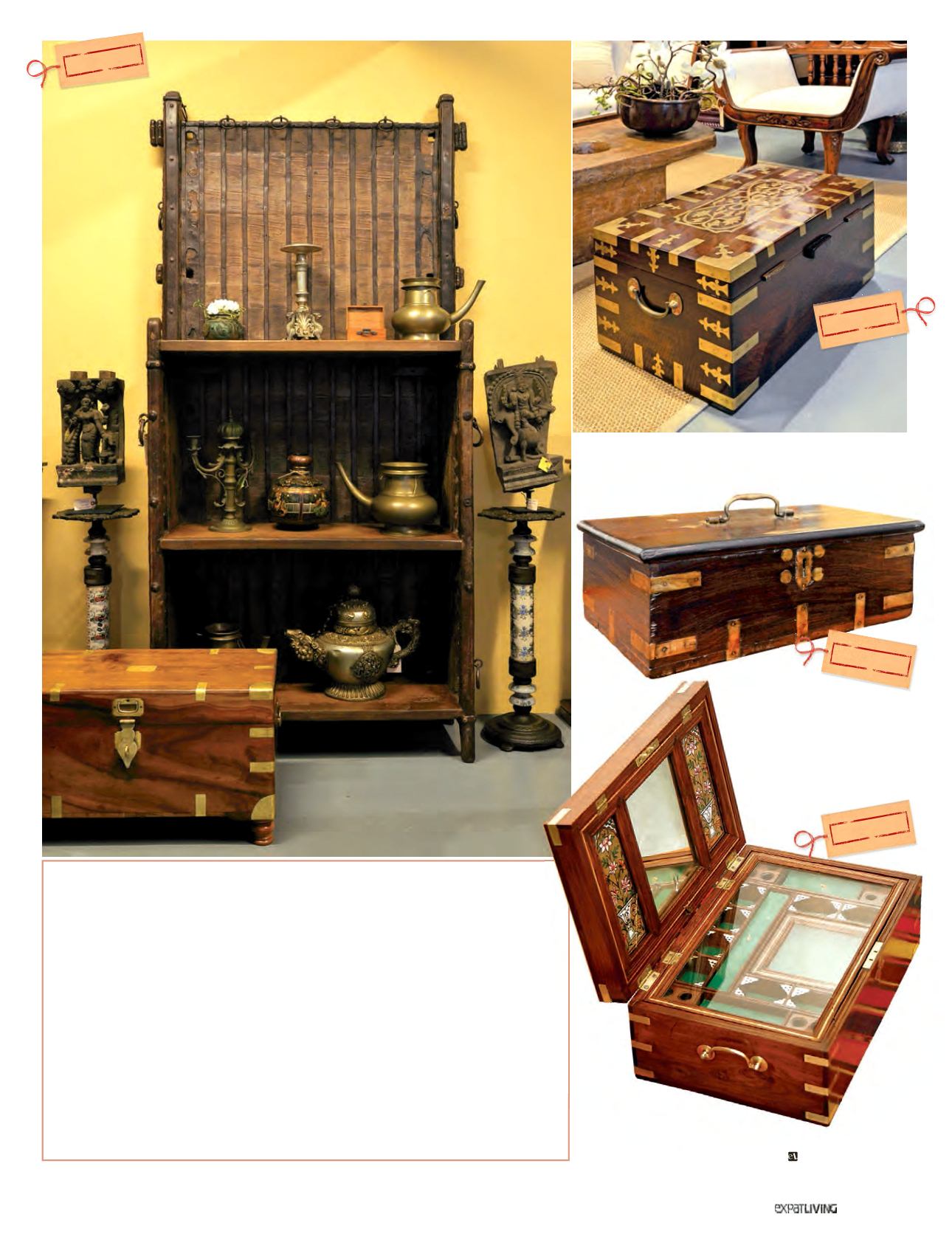

HOME
63
January15
“A very basic cash box made from jackwood and used in
households from the early 1900s, this simple item captures
the essence of how cash was stored in those days.”
“This rosewood
box with brass
ornamentation isn’t an
antique but is a replica of
the old boxes. Its size and
form are very beautiful.”
Prakalyam Gallery
The Vertex, 33 Ubi Avenue 3, #01-09
6635 4741 | prakalyamgallery.com
What is Indian colonial furniture?
Indo-European colonial furniture dates back to the 15th century, when the
Portuguese first landed in India. Discovering that Indians preferred to sit on
carpets, the Portuguese called on local craftsmen to custom-build chairs and other
furniture for seating that reflected their own style. Later, the Dutch followed
suit, and this continued through to the British era.
The colonial period in India, from the 16th to the 20th century, saw various
colonial rulers exercising their taste and culture on the Indian subcontinent.
During this era, different styles of furniture were designed by local craftsman
under the influence of ruling powers; these styles are referred to as Indo-
Portuguese, Indo-Dutch and Anglo-Indian.
The furniture made during this time was from high quality teak, sandalwood
and rosewood, on the basis of European designs replicated and sometimes
reinterpreted by talented local artisans.
“The cart shelf
is from an old
bullock cart,
which I felt
would work well
as a bookshelf.
It’s a rustic
Indian ethnic
piece, estimated
to be around 80
years old.”
$4,760
“This lovely British colonial
box, with its original
ivory work, stained glass
painting and secret
compartments was made
during the British Raj
(1858-1947).”
$3,100
$2,100
$570



















